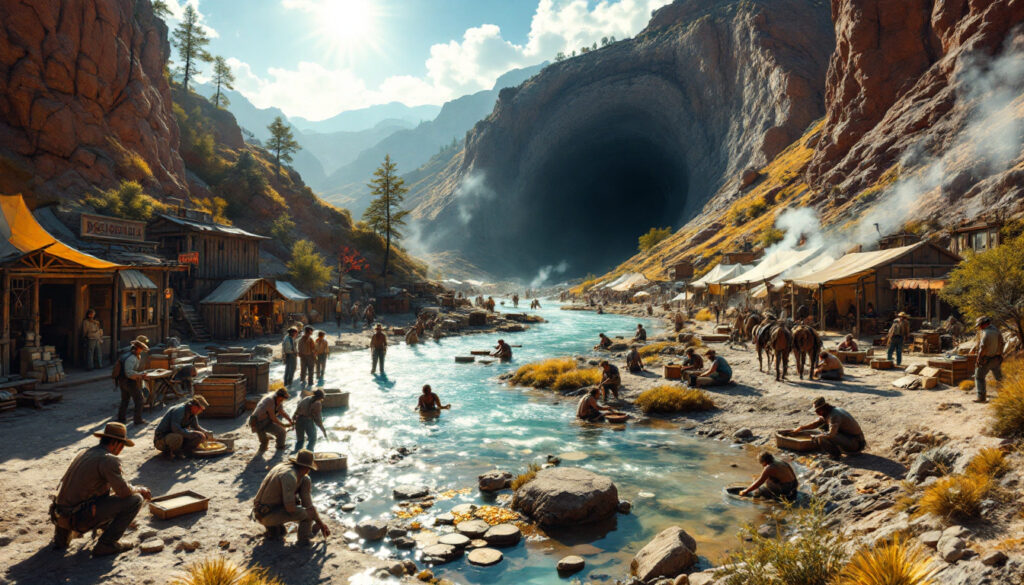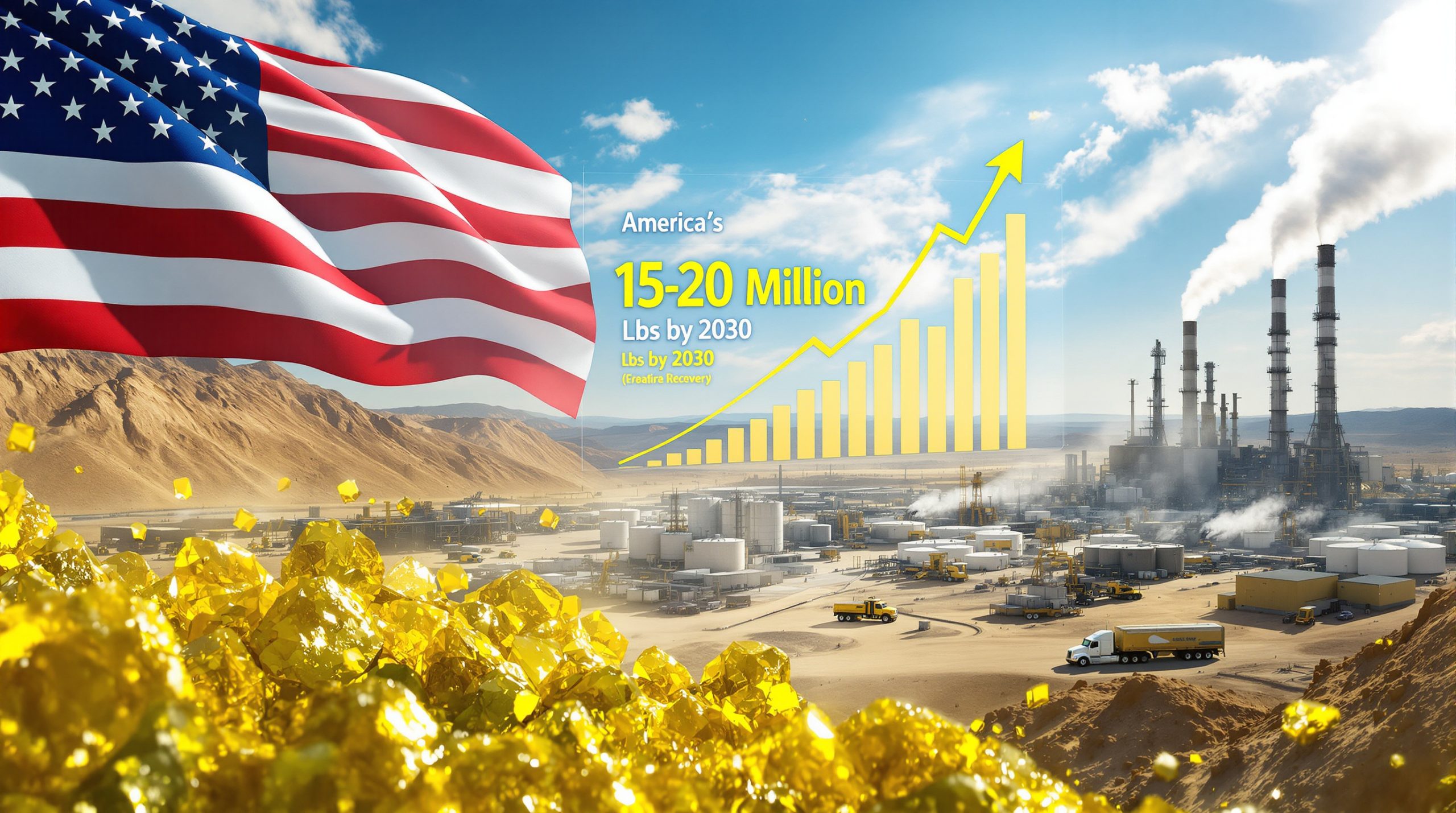What Was the California Gold Rush?
The Discovery That Changed History
In January 1848, James W. Marshall's discovery of gold flakes at Sutter's Mill sparked a mass migration that redefined California's trajectory. Despite efforts to suppress the news, word spread globally, drawing over 80,000 "49ers" by 1849 and propelling California to statehood in 1850. The Gold Rush's immediacy underscored the fragility of secrecy in an interconnected 19th-century world, as newspapers and letters disseminated accounts of wealth, igniting global fervor. The California Gold Rush became one of the most significant events in American history, fundamentally altering the economic and social landscape.
The Gold Rush by the Numbers
California's population exploded from 14,000 non-Indigenous residents in 1848 to over 250,000 by 1852, with San Francisco alone growing from 1,000 to 25,000 in two years. By 1855, the state's gold output peaked at $60 million annually (equivalent to $2.1 billion today), financing infrastructure and institutional development. These figures reflect not only economic ambition but also the human cost of displacement, as Native American populations declined by 80% due to disease and conflict. Understanding the geology of ore deposits helps explain why California became such a prolific gold producer.
Economic and Political Impact
The Gold Rush accelerated California's admission to the Union, bypassing territorial status through the Compromise of 1850. This political maneuver was fueled by the region's sudden economic viability, as gold-backed currency stabilized early fiscal systems. However, the Mining Act of 1850 codified land claims, marginalizing Indigenous peoples and immigrant laborers, particularly Chinese workers who faced discriminatory taxes.
How Did Gold Mining Shape California's Economy?
Creation of New Towns and Infrastructure
Mining towns like Sacramento and Grass Valley emerged as commercial hubs, supported by railroads and steamboat networks. San Francisco's port became the busiest on the West Coast, handling $2 billion in gold shipments by 1854. These settlements laid the groundwork for modern urban centers, though their rapid growth often outpaced regulatory frameworks, leading to chaotic land disputes. Many investors looking into mining stocks guide may find parallels with today's resource booms.
Financial Innovation and Banking
The Bank of California, founded in 1864, centralized gold transactions, introducing standardized currency amid rampant competition. This shift from barter to institutional banking mirrored broader economic maturation, though speculative ventures frequently collapsed, exemplified by the 1855 financial panic.
Global Migration and Cultural Diversity
Over 25,000 Chinese immigrants arrived by 1852, introducing hydraulic mining techniques that increased extraction efficiency but exacerbated environmental degradation. Mexican miners, meanwhile, faced land dispossession under the Foreign Miners' Tax, highlighting the era's racial stratification. These dynamics forged California's multicultural identity, albeit through systemic inequities.
How Did San Francisco Transform During the Gold Rush?
From Small Settlement to Boom Town
San Francisco's population surged from 1,000 to 200,000 by 1855, driven by its role as the primary gateway for mining supplies. The city's grid system, designed by Jasper O'Farrell in 1847, expanded haphazardly, resulting in a labyrinth of streets that mirrored its economic volatility.
Economic Explosion
Commercial enterprises like Levi Strauss & Co. emerged to meet miners' needs, generating $8 million in revenue by 1853. The Stock Exchange, established in 1862, further cemented San Francisco's financial dominance, though the 1906 earthquake revealed vulnerabilities in its unregulated growth. Today's market dynamics insights can help us understand the economic volatility of that era.
Cultural and Social Impact
The 1850s saw the rise of "Sydney Ducks" gangs and vigilance committees, illustrating the tension between lawlessness and order. Concurrently, the First Chinese Baptist Church (1852) and Mission Dolores (1776) symbolized the city's cultural pluralism, despite pervasive discrimination.
Why Did Miners Go Underground?
Depletion of Surface Gold
By 1855, placer mining yields plummeted to $10 million annually, down from $81 million in 1852. This decline forced prospectors into the Sierra Nevada foothills, where quartz veins held deeper deposits.
Rise of Hard Rock Mining
The Empire Mine's 367-mile tunnel system, reaching depths of 11,000 feet, exemplified the shift to industrialized extraction. Steam-powered Cornish pumps, introduced in the 1870s, mitigated flooding but required capital beyond individual miners' means.
Technological Advancements
Dynamite, patented by Alfred Nobel in 1867, reduced excavation costs by 40%, while stamp mills increased ore processing efficiency. These innovations, however, prioritized profit over safety, with fatal accidents rising by 30% in the 1880s. Many of these historical techniques have evolved into today's modern mining innovations that prioritize both efficiency and safety.
What Were California's Most Famous Underground Gold Mines?
Empire Mine: One of the Richest in California
Operating from 1850 to 1956, the Empire Mine yielded 5.8 million ounces of gold, valued at $12 billion today. Its owner, William Bourn Jr., invested in Pelton turbines, which generated hydropower for underground lighting—a rarity in 19th-century mining.
Kennedy Mine: The Deepest Vertical Shaft
The Kennedy Mine's 5,912-foot shaft required 400 tons of timber for stabilization, reflecting the engineering prowess of the era. Despite producing $34 million in gold, labor disputes in 1896 halted operations temporarily, foreshadowing unionization trends.
Bodhi: Ghost Town with Golden Past
Bodhi's 2,000 structures, preserved in "arrested decay," attract 200,000 annual visitors, generating $5 million in tourism revenue. Its decline after the 1932 fire underscores the transient nature of mining economies.
Is Gold Mining Still Active in California Today?
Allegany Mine: Still Producing Gold
The Allegany Mine, active since 1851, extracts high-grade ore using cyanidation, producing 2,000 ounces annually. Strict EPA guidelines mandate water recycling, reducing mercury discharge by 90% compared to 19th-century practices.
Modern Mining Operations
Companies like Sutter Gold leverage 3D seismic mapping to locate untapped veins, though permitting delays average 7–10 years due to environmental reviews. This regulatory landscape balances economic potential with ecological preservation, a tension unresolved since the hydraulic mining bans of 1884.
Is There Still Gold Hidden Deep Beneath California?
Untapped Gold Reserves
The USGS estimates 10 million ounces remain in the Mother Lode region, primarily below 3,000 feet. Advanced drilling technologies, such as directional boring, enable access with 50% less surface disruption. For many investors, these untapped resources present potential for long-term gold investment strategies.
Challenges of Modern Extraction
Environmental remediation costs average $500 per ounce, incentivizing low-impact methods like bioleaching. However, mercury contamination from historical tailings persists, affecting 40% of Central Valley waterways.
Future of California Gold Mining
Legislation like SB 209 (2023) promotes sustainable mining through tax incentives, yet community opposition blocks 60% of proposed projects. The industry's future hinges on balancing heritage preservation with ecological accountability.
What Environmental Impact Did Gold Mining Have?
Hydraulic Mining Damage
Hydraulic mining eroded 1.2 billion cubic yards of sediment, clogging rivers and displacing 90% of aquatic species in the Sacramento Basin. The 1884 Sawyer Decision banned such practices, though legal challenges delayed enforcement until 1893.
Native American Displacement
The Gold Rush displaced 120,000 Native Americans, with the Miwok and Yokuts populations declining by 70%. Contemporary reparations efforts, including the 2022 California Truth and Healing Council, seek to address these historical injustices.
Modern Environmental Considerations
The Central Valley Regional Water Board mandates 98% tailings reprocessing, yet 30% of legacy sites remain unremediated. Collaborative initiatives, like the Sierra Fund's mercury cleanup, aim to restore 500 acres by 2030.
FAQ About California Gold Mining
How much gold was extracted during the California Gold Rush?
Approximately 125 million troy ounces were extracted between 1848 and 1855, valued at $200 billion today.
Can individuals still pan for gold in California today?
Recreational panning is permitted in 15 state-designated areas, with annual yields averaging 2 ounces per individual.
What mining techniques were used during the California Gold Rush?
Early methods included panning and sluicing, later supplanted by hydraulic mining (1853) and stamp mills (1850s).
How deep were the gold mines in California?
The Empire Mine's tunnels reached 11,000 feet, while the Kennedy Mine's vertical shaft extended 5,912 feet.
What legal changes resulted from California's gold mining industry?
The 1884 Sawyer Decision curtailed hydraulic mining, while the 1850 Foreign Miners' Tax institutionalized racial exclusion.
Ready to Discover the Next Major Gold Discovery?
Explore real-time alerts on significant mineral discoveries with Discovery Alert's proprietary Discovery IQ model, which turns complex data into actionable investment insights just like those that drove the California Gold Rush fortunes. Visit our discoveries page to understand how major mineral findings can generate substantial returns and position yourself ahead of the market with our 30-day free trial.




